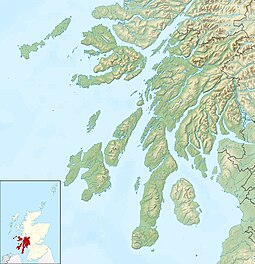| Old Norse name | Flat-ey |
|---|---|
| Meaning of name | "flat island" |
 Fladda seen from the north-east | |
| Location | |
| OS grid reference | NM298438 |
| Coordinates | 56°31′N6°23′W / 56.51°N 6.39°W |
| Physical geography | |
| Island group | Treshnish Isles |
| Area | 26 ha [1] |
| Highest elevation | 26 m |
| Administration | |
| Council area | Argyll and Bute |
| Country | Scotland |
| Sovereign state | United Kingdom |
| Demographics | |
| Population | 0 |
| References | [2] [3] [4] [5] |
Fladda is the northernmost of the Treshnish Isles. Its name comes from the Old Norse Flat-ey meaning "flat island". Fladda is owned by the Hebridean Trust.

